Geology Reference
In-Depth Information
Increasing Fault Length
Constant “Mature” Fault Length
Total Displacement Profile
Total Displacement Profile
a
a
c
e
fault tip
positions
fault
tip positions
b
c
d
e
Incremental Displacements
Incremental Displacements
e
e
d
d
c
c
b
b
a
a
Along-Strike Distance
Along-Strike Distance
rapid propagation, then stationary tips
with “characteristic” ruptures
propagating tips with
non-“characteristic” ruptures,
Fig. 9.1
Competing models for accumulation of displacement on faults.
(Left) The “traditional” model suggests faults lengthen in each rupture as they accumulate displacement. (Right)
The “fixed length” model suggests that faults propagate rapidly in early stages of growth, stop lengthening as fault
tips encounter strong barriers, and then simply accumulate displacement at a nearly fixed length. Modified after
Amos
et al.
(2010).
unaffected
region
unaffected
region
ice
load
crust
lithospheric
mantle
increase
in
σ
1
and
σ
3
σ
3
σ
1
normal
stress
increase in
σ
1
&
decrease in
σ
N
σ
3
Mohr circle for point P
(moves away from failure
during loading)
During Loading
and Flexure
ice
melt
decrease
in
σ
1
and
σ
3
crust
lithospheric
mantle
fault
σ
3
σ
1
normal
stress
decrease in
σ
1
&
increase in
σ
N
σ
3
During Unloading
and Rebound
Stress state at point P
(moves to failure)
Fig. 9.2
Conceptual linkages between crustal loads and fault slip.
Suppression of fault slip during temporary loading by glaciers or lakes. (Top) Ice (or water) loads and associated
crustal flexure can increase crustal stresses such that a fault is moved farther away from failure (as represented by
the Mohr-Coulomb failure criterion). (Bottom) Removal of the load and crustal rebound can then drive the fault to
the point of failure. Modified after Hampel and Hetzel (2006).




















































































































































































